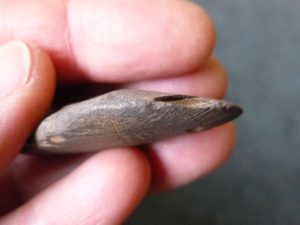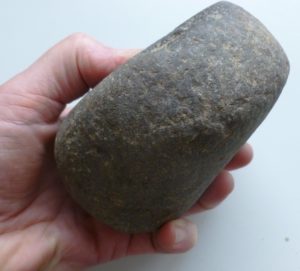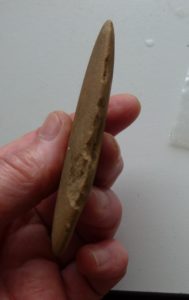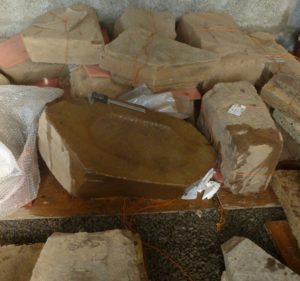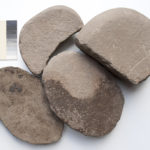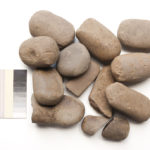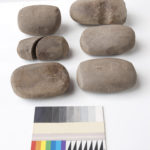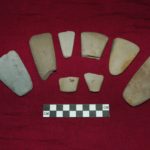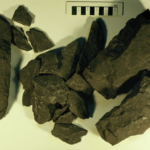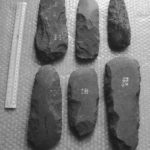Recent excavations in Orkney have almost doubled the number of recorded stone axes. Consequently, a large proportion of these tools, some 64%, come from excavated contexts at settlement or funerary sites dating from the Early to Late Neolithic and Early Bronze Age. Many different types of stone were chosen for the axes and they were produced in a wide range of shapes and sizes. This information, together with the contextual detail, allows us to go beyond the standard ‘source and distribution’ aspect of stone axe studies and instead take a wider view of how all the axes in a region may have been used in prehistory by exploring the relationship between the style of axe, by looking at the choice of stone and shape, and the means of deposition of these tools.The research demonstrated that there were significant differences in axe style and deposition between funerary sites and occupation sites of the Early Neolithic, Late Neolithic and Early Bronze Age. For instance, axes that were placed in Early Neolithic chambered tombs or as ‘special’ deposits at Late Neolithic occupation sites were larger than axes that were in general use on settlement sites and they were more likely to be complete. The axes found in Late Neolithic houses were often further defined by variations in their shape and the patterning of the stone. In contrast, axes that were deposited in the Orkney Cromarty tombs had less variation in shape and were possibly more restricted in the choice of stone. Axes from external deposits at settlement sites tended to be smaller in size or more fragmented.
Discussion as to why the axes were deposited in particular ways touches on their role in the life of the house or chambered tomb; some were placed against walls or under floors whilst the structures were in use and others came from contexts that may have acted as closing deposits or markers of transition. The use of stone axes continued into the Early Bronze Age at cist cemeteries and they were also deposited in middens of this date at settlement sites.
The full article is to published as: Clarke, A forthcoming ‘Does Size Matter? Stone axes from Orkney: their style and deposition’ in RV Davis and MR Edmonds (eds) Stone Axe Studies lll, CBA and can be downloaded here:
https://www.academia.edu/7847738/Does_size_matter_Stone_axes_from_Orkney_their_style_and_deposition
We now have records on all axes that were found through excavation up to September 2008 as well as all of the axes from the National Museum of Scotland, the Hunterian Museum, Tankerness House and Stromness Museum. A full catalogue is to be lodged with the Implement Petrology Group. It is hoped to update this catalogue with any new finds of stone axes and I would be delighted to hear of any axes that have been found recently in Orkney, either as stray finds or excavated finds.

